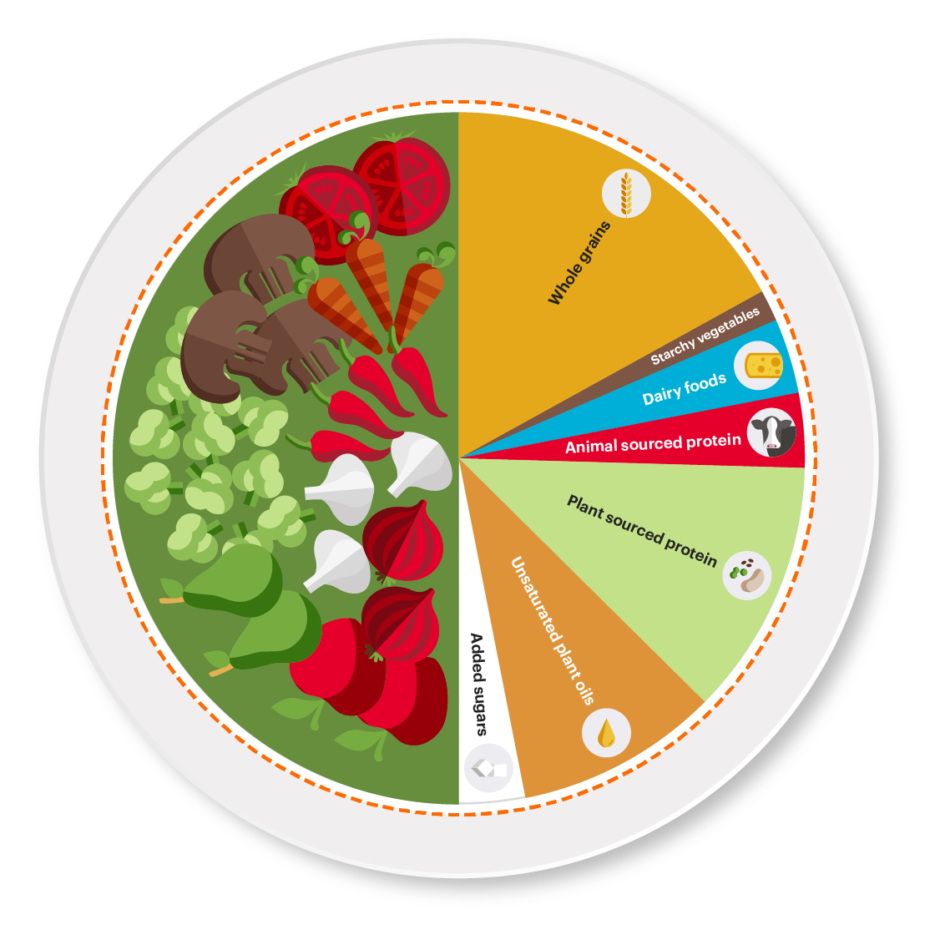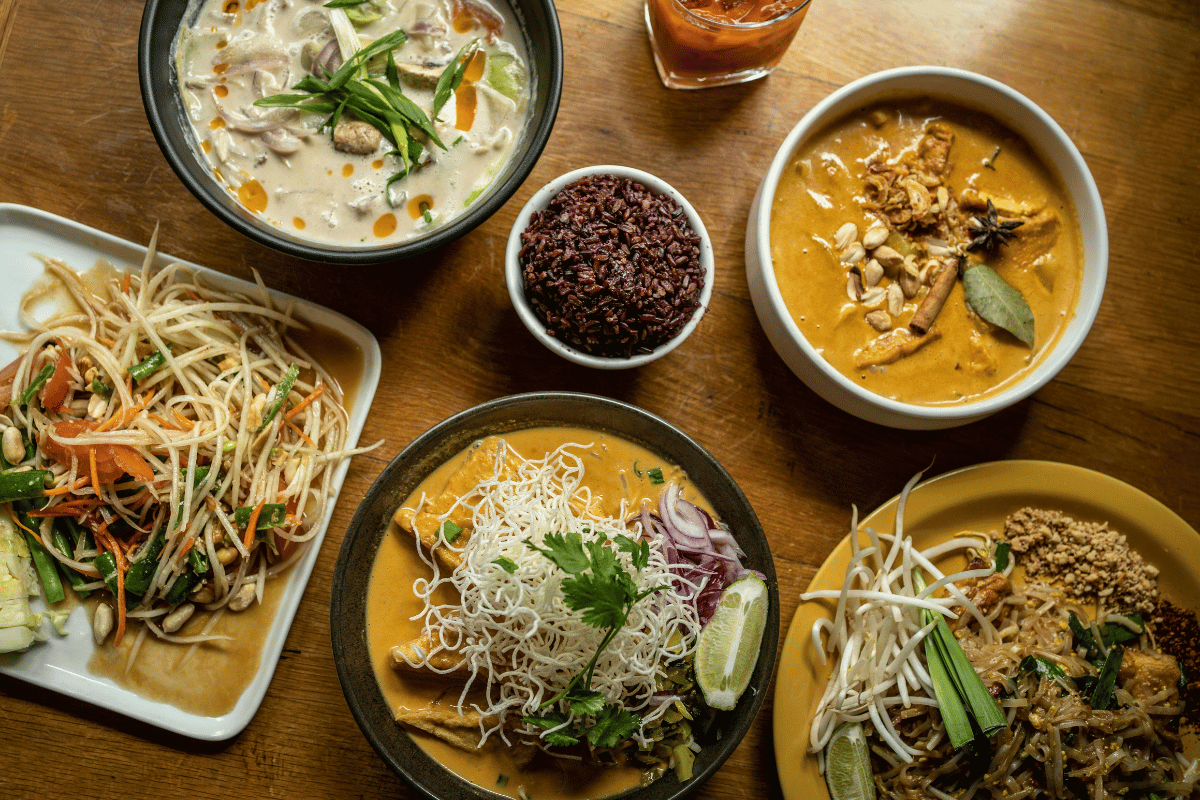Wichayapat Piromsan
23
September
2025
Browsing the aisles of a Bangkok health food store recently, I saw something that stopped me in my tracks. Bottles of chicken breast smoothie.
Not one, but altogether three different brands. Each brand had a different colour scheme and text, but they all had one thing in common: the HIGH PROTEIN claim somewhere on the label, big and bold.
While I cannot imagine how the idea of chicken-breast drinks got past the early development stage, this product reveals how deep-seated our fear of protein deficiency has become. And as the latest research from health experts suggests, this protein scare costs us a lot in terms of our health and the environment.
How much protein do Thai people actually consume? Do we eat enough?
A new analysis by Institute of Nutrition Mahidol, published by Madre Brava, has shown that Thai people are, to use academic terms, “protein secured.” Yes, we consume enough protein.
The World Health Organization recommends that an average person consume 0.8 grams of protein per 1 kg or body weight. Researchers at the Institute of Nutrition Mahidol analysed the data collected by a survey of 8,478 people, and found that average protein consumption of Thais age 13 and older is 0.81 to 1.16 grams per kilogram of body weight. This falls within the healthy range of protein consumption.
This means on average Thai people consume enough protein. In fact, if a person drinks one bottle of chicken-breast smoothie, they do not have to eat anything else throughout the day to meet their minimum protein requirements.
There’s one thing we need to do more of, however: we need to eat more plants.
Meat and seafood production is known to produce far greater quantities of planet-harming emissions than plants. A timely reminder of the consequences of our changing climate is currently playing out in the north, as we once again deal with severe flooding. Overconsumption of meat, particularly processed and red meat, is linked to more non-communicable diseases.
The Institute of Nutrition analysis found that, in Thailand, animal-based protein accounts for approximately 70% of total protein intake, while plant-based protein contributes only 30%. This is concerning both for peoples’ and the planet’s health.

The EAT-Lancet Commission, a group of 30 leading scientists, has done rigorous research and produced the Planetary Health Diet, which shows how we can feed 10 billion people a healthy diet while staying within planetary boundaries. According to this diet, a meal should be rich in plants, more protein should come from legumes, and animal-based protein should be only a modest part of plates.
The increasing protein intake from animal-protein comes at the expense of other healthy foods
The same analysis from Mahidol University also looked at the data from the Household Socio-Economic Survey (HSES) conducted by the National Statistical Office, where each household was asked about their spending on food items.
It found that Thai people have been increasing their spending on meat and eggs steadily over the last decade. Meanwhile, the consumption of other healthy food groups: fruits, vegetables, legumes, and whole grains have been decreasing over time. It concludes that the shift to more animal-sourced foods has displaced the consumption of fruits, vegetables, legumes and whole grains.
This trend is concerning, because our bodies need more than protein to sustain themselves, for example, fibre and micronutrients: potassium, folate, magnesium, and vitamin C, which come from fruits, vegetables, nuts, and seeds. Our focus on getting enough protein is depriving us of other essential nutrients.
The research attributed the increase of animal-based food consumption to rising income, with Bangkok and the Central region reporting the highest consumption of meat and eggs. This is aligned with the global trend, the more money people have, the more meat they eat.
Preserve the plant-rich diet
Good news: this unhealthy consumption is still in its infancy. Currently, Thai people’s consumption is not too far off the chart when benchmarked against the EAT Lancet’s Planetary Health Diet, unlike other high-income countries in the European Union, the UK, and US. One way to stop this trend is to preserve the plant-richness and balanced nature of Thai and Southeast Asia culinary culture, ones we are familiar with, and love!

We do not have to follow the footsteps of high-income nations where high-income comes with the unhealthy level of meat consumption. Both our health and our economy can thrive with healthy, plant-rich eating.
Gone are the days where we teach children that protein equates animals. The Thai government should consider adjusting the national food-based dietary guidelines to encourage Thais to adopt more balanced diets, by increasing both the intake and the diversity of fruits, vegetables, legumes, and whole grains. They should further incentivise the consumption of these healthy, diverse food groups by making them cheaper and more accessible.
Private sectors, like supermarkets, restaurants and food producers, can contribute to creating a food environment where it is easier for people to choose to eat plant-rich options.
- Food retailers should improve the affordability and visibility of healthy and sustainable protein from plants.
- Restaurant chains can do their part by offering plant-rich options, adjusting the proportions between plant and animals on the plate and offering them at a reasonable price range.
- Meat producers can increase their R&D in the effort to make plant-based alternative protein more affordable, appealing and accessible to Thai consumers.
And perhaps when these steps are taken, we will have shelves that are stocked with vegetables, nuts, seeds and legumes instead of liquidised chicken breast.
A version of this article first appeared in Green Queen.
.png)